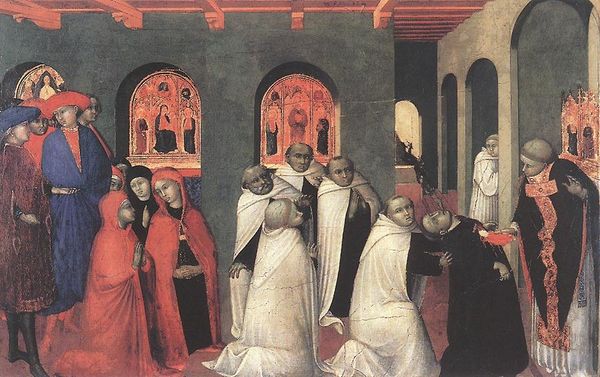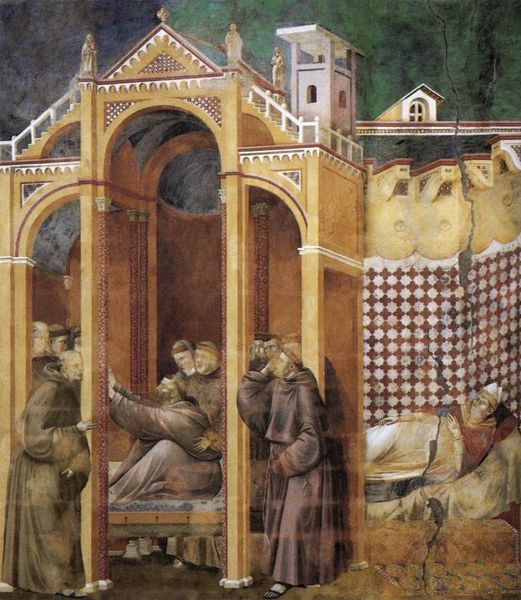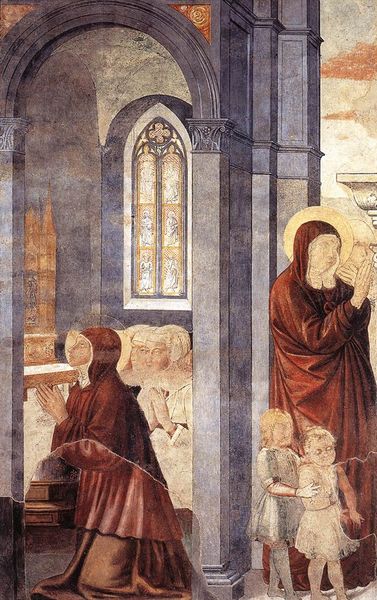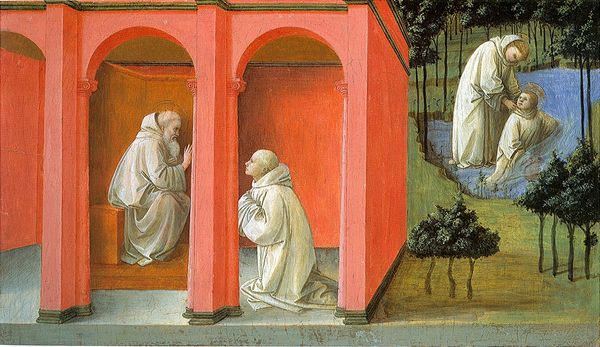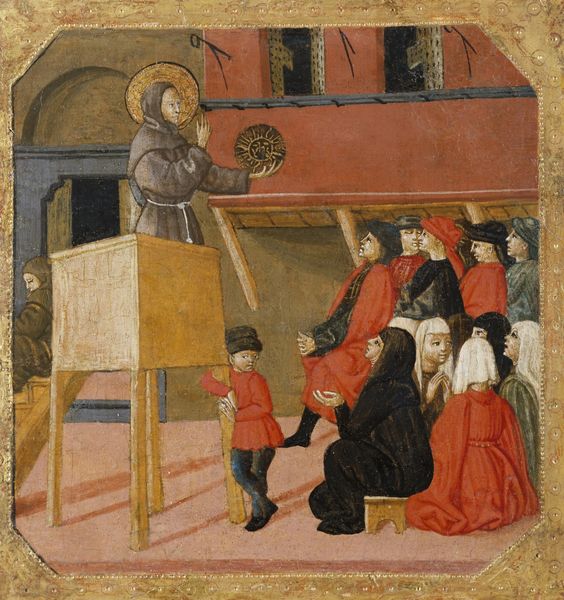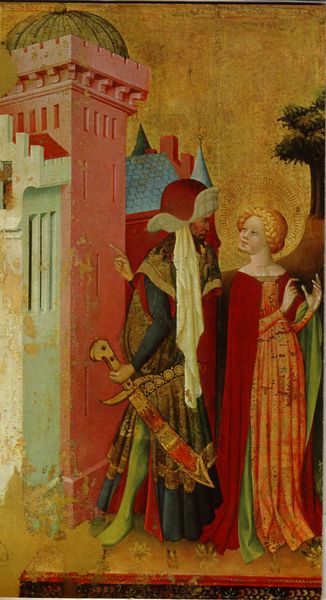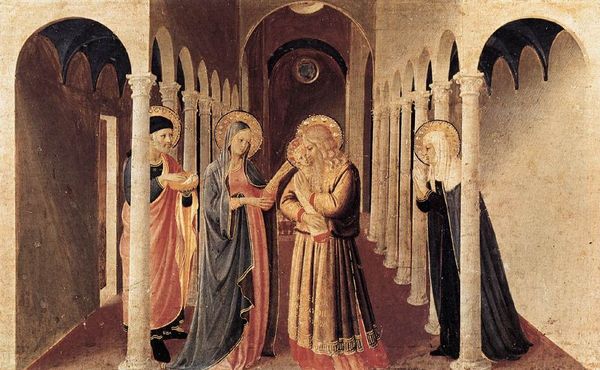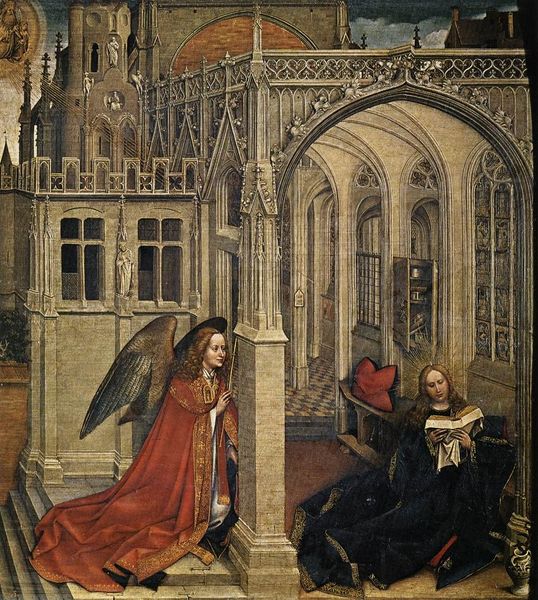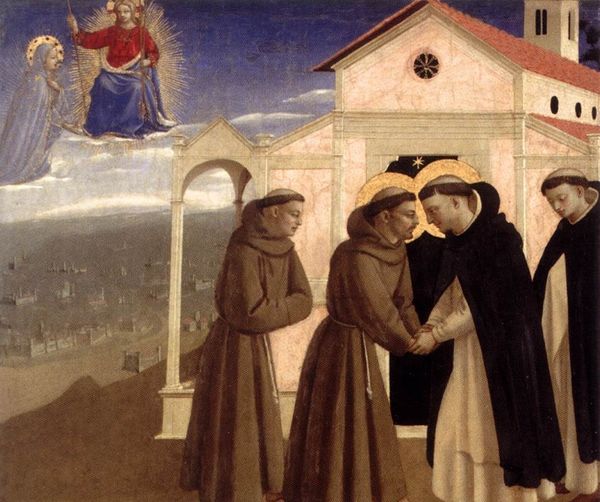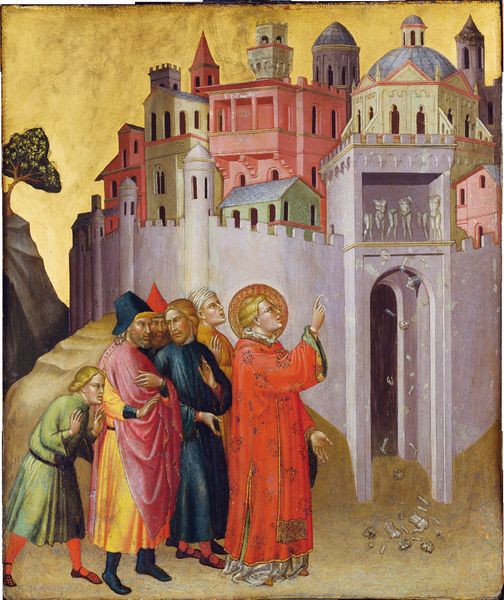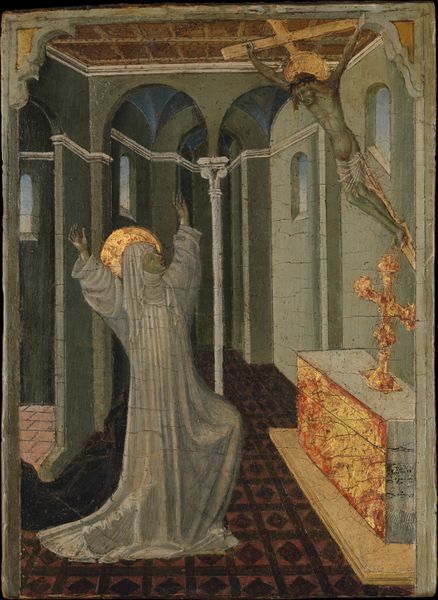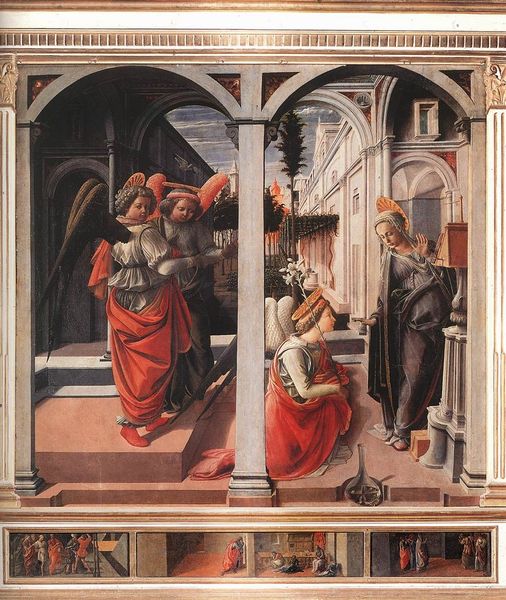
St Thomas Inspired by the Dove of the Holy Ghost 1423
0:00
0:00
tempera, painting
#
narrative-art
#
tempera
#
painting
#
figuration
#
history-painting
#
italian-renaissance
#
early-renaissance
Dimensions: 23 x 39 cm
Copyright: Public domain
Editor: We're looking at "St Thomas Inspired by the Dove of the Holy Ghost" created in 1423 by Il Sassetta, a tempera painting. It’s remarkably austere, with a sense of quiet contemplation. How do you read the visual language here? Curator: Notice the material simplicity. The tempera itself, ground pigments mixed with egg yolk, reflects available resources and labor. This choice directly counters the opulence often associated with religious patronage, doesn't it? How does the repetitive architecture speak to this too? Editor: It’s striking – the uniformity, the simple columns… almost manufactured. I suppose it’s meant to emphasize the piety, and minimize distraction from wealth? Curator: Exactly! And the deliberate display of books—consider those as meticulously hand-produced objects. The accessibility, or lack thereof, highlights the social hierarchy intertwined with knowledge. It prompts questions about power, literacy, and religious instruction. Are we, perhaps, supposed to notice this implicit tension? Editor: It makes you wonder who this was *for*, and who *made* it. So it's not just the image, but all the materials that contribute to meaning, and reflect social structure? Curator: Precisely. The physicality, the touch of the artist evident in the tempera strokes, offers tangible insight into the economic and social conditions shaping both its production and consumption. This challenges any separation between sacred inspiration and material reality. Editor: So, the very 'stuff' it’s made of—the tempera, the panels—are as critical as the story it’s telling? It changes the whole dynamic! Curator: It encourages us to analyze not only the subject matter but also the material circumstances of its creation and its circulation, thus giving attention to who it represents and how this production maintains social meaning in Renaissance Italy. Editor: I hadn't considered that the physical aspects carried so much weight! I see Early Renaissance painting in a totally new way now. Thanks.
Comments
No comments
Be the first to comment and join the conversation on the ultimate creative platform.
